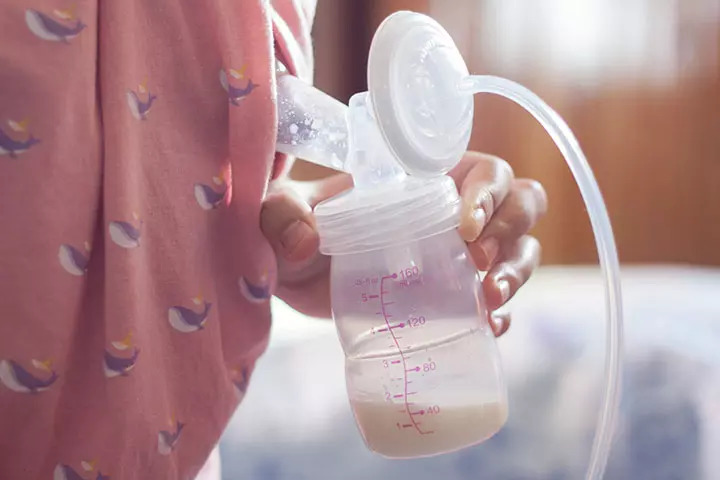
Image: Shutterstock
All mamas know the importance of breastfeeding. Most of us try our best to breastfeed our baby at least for the first 6 months of life. But despite doing our best to continue the milk supply, our girls can slow down. However, there is a lot that you can do to get the supply going before leaving the hospital.
If you have a baby on the way and would prefer breastfeeding, continue reading our article to know the simple steps that you can take to ensure a great milk supply.
1. Breastfeed As Soon As Possible
Breastfeed soon after birth preferably within an hour or two after you have delivered your baby (1). Most hospitals would arrange a skin to skin contact soon after birth and provide support to breastfeed your little one. Usually, a nurse will be there by your side to assist you with breastfeeding. If you have any concerns or worries regarding breastfeeding or how to hold your baby, don’t hesitate to ask your midwife or the nurse.
2. Breastfeed Often
Breastfeeding work on ‘supply and demand.’ So the more you breastfeed your baby, the more milk will be produced by your breasts. The suckling motion of the baby on your breast will trigger certain hormones in the body to facilitate milk production. The breast muscles will then contract to allow the flow of milk through milk ducts. This is known as let-down reflex (2).
Try to breastfeed your baby 8-12 times a day to maintain a constant milk supply. While breastfeeding, let your baby decide when to stop.
3. Feed Your Baby From Both Breasts
Breastfeed from each breast alternatively to increase the production of breast milk. Feed your baby from the first breast and wait until they stop or slow down before switching to the other breast (3). If your baby falls asleep or feels full after breastfeeding from one side, make sure to start with the other breast during the next time. You can place a band on your bra strap to help you remember which breast you breastfed from the last time.
4. Pump
If your baby is born premature or if there are any health complications with your baby, you may not be able to breastfeed right away (4). In such instances, you can start pumping to ensure that your milk supply doesn’t get affected by it. You can pump manually or get electric pumps to pump breastmilk and stimulate the breast milk supply.
Pumping can also be helpful when your baby has missed a feeding or if you have milk leftover after feeding. It will also allow your partner to bond with the baby through some feeding time. And also give new mama some nap time.
5. Relax And Stay Calm
Anxiety and stress can contribute to low milk supply (5). We know being a new mom can be hard and stressful, but find ways to relax and create a positive atmosphere around you so that it doesn’t affect your breast milk production. You can try breathing exercises or go out and get some fresh air to help you feel relaxed. If you feel overstressed or low, be sure to talk to your close ones or seek help from your doctor.
6. Avoid Drinking And Smoking
Drinking moderate to heavy amounts of alcohol and smoking can reduce your milk supply (6). So make sure that you stay away from it as long as you plan to breastfeed your little one. Alcohol can enter your baby’s bloodstream through breast milk. This, in turn, can affect their motor skills and disrupt their sleep patterns. So it’s safe to steer clear from alcohol while breastfeeding.
Even if you have a great breast milk supply, there are a lot of hurdles you will still have to face while breastfeeding your baby. If you are finding it hard to breastfeed, try changing breastfeeding positions or talk to a lactation consultant before switching to formula milk.






















